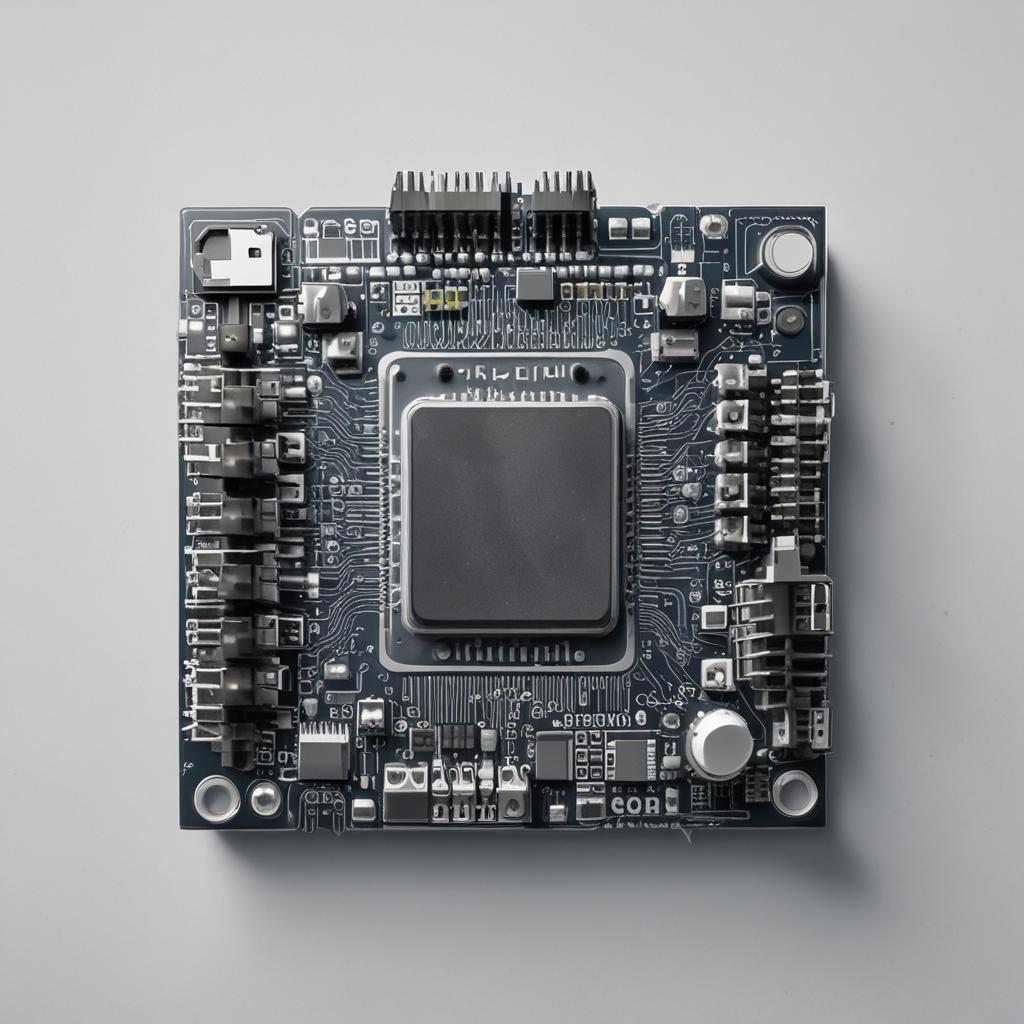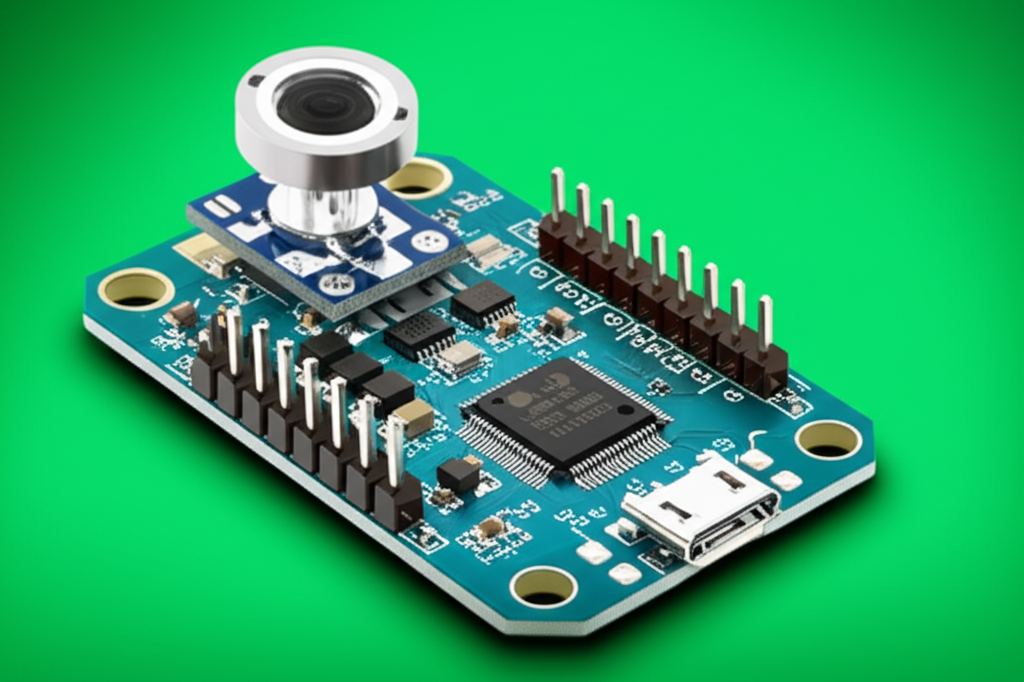Table of Contents Show
Bringing Deep Learning to the Edge: How to Use CNN on Microcontrollers for Visual Recognition
The rise of edge AI has sparked an insatiable demand for on-device visual recognition, pushing the boundaries of what’s possible with microcontrollers (MCUs). Despite their limited resources, these tiny yet powerful chips can now harness the power of Convolutional Neural Networks (CNNs) for real-time image classification, object detection, and more. This blog post explores how to design, optimize, and deploy CNNs on microcontrollers, unlocking a world of possibilities for low-latency, privacy-focused, and energy-efficient edge applications.
Before diving into the how-to, it’s essential to grasp the challenges of running compute-intensive CNNs on resource-constrained microcontrollers.
Hardware Limitations of Microcontrollers
Microcontrollers typically have limited Random Access Memory (RAM) ranging from kilobytes to megabytes, modest flash storage, and a CPU that operates at tens to hundreds of MHz, with no dedicated GPU. Compared to a typical desktop or server, MCUs have orders of magnitude less computational power and memory. This mismatch makes running CNNs on MCUs a daunting task.
Power and Latency Constraints in Edge Applications
Continuous cloud-based inference isn’t practical for battery-powered devices due to power consumption and latency concerns. Real-time applications, such as smart cameras, wearables, and IoT sensors, require quick, reliable responses, making local processing crucial.

Model Size vs. Accuracy Trade-offs
Optimizing CNNs for MCUs involves balancing model size and accuracy. Larger models offer better performance but may not fit in memory or run within latency constraints. Model compression techniques help strike the right balance between size and accuracy.
Designing or Selecting a CNN for Microcontroller Deployment
Choosing a Lightweight CNN Architecture
Several lightweight CNN architectures are designed for edge devices:
- MobileNetV1/V2: Balances accuracy and efficiency with depthwise separable convolutions.
- SqueezeNet: Achieves AlexNet-level accuracy with 50x fewer parameters.
- EfficientNet-Lite: Offers better accuracy than MobileNet with similar computational costs.
- TinyML-specific models: Custom architectures like GhostNet, ShuffleNet, or EfficientDet-S are optimized for tiny devices.
Comparing these models’ parameter count, FLOPs, and suitability for MCUs helps select the best fit for your application.
Model Optimization Techniques
To further shrink models for MCUs, consider the following optimization techniques:
- Quantization: Convert 32-bit floating-point numbers to 8-bit integers to reduce model size and accelerate inference.
- Pruning: Remove redundant neurons or filters to shrink the model.
- Knowledge Distillation: Train a smaller “student” model using a larger “teacher” model to maintain accuracy with fewer resources.Transfer Learning for Small Datasets
Key Features
Tiny-YOLOv2
Lightweight CNN for object detection
Available
TensorFlow Lite
Optimized ML library for edge devices
Available
Microcontroller-optimized CNN layers
Efficient CNN layers for limited resources
Limited
Customizable CNN architecture
Tailor CNN to specific microcontroller constraints
Coming Soon
Real-time inference on microcontrollers
Fast CNN inference for live video processing
Available
Feature overview for How to Use Cnn on Microcontrollers for Visual Recognition
For limited datasets, use transfer learning to fine-tune pre-trained models on your custom data. This approach saves training time and data requirements while preserving learned features.
Preparing and Training the CNN Model
Data Collection and Preprocessing
Collect representative image datasets for your target use case and preprocess them by resizing, normalizing, and augmenting (e.g., rotation, flipping) to enhance model robustness.
Training the Model with Edge Deployment in Mind
Train your model using frameworks like TensorFlow/Keras with built-in support for TensorFlow Lite (TFLite). Implement quantization-aware training (QAT) to maintain accuracy post-optimization.
Evaluating Model Performance and Accuracy
Monitor accuracy, inference time, and model size to ensure your model meets the application’s requirements. Validate performance on diverse datasets to confirm robustness before deployment.
Converting the CNN Model for Microcontroller Use
Using TensorFlow Lite for Microcontrollers (TFLite Micro)
TFLite Micro enables converting and deploying models on MCUs. Here’s a step-by-step guide:
Export the model: Export your trained model in the `.h5` format using TensorFlow/Keras.
Apply post-training quantization: Convert the model to 8-bit integers using the `tflite_quantize` tool to reduce model size and inference latency.
Convert to C array: Use the `tflitec` tool to convert the quantized `.tflite` model into a C header file (`model.h`).
Show an example Python code snippet for model conversion:
python
import tensorflow as tf
from tensorflow.keras.models import load_model
from tensorflow.lite.python.schema import SchemaLoad and quantize the model
model = load_model(‘path/to/model.h5’)
converter = tf.lite.TFLiteConverter.fromkerasmodel(model)
converter.optimizations = [tf.lite.Optimize.DEFAULT] tflitequantmodel = converter.convert()Write the quantized model to a file
with open(‘path/to/model.tflite’, ‘wb’) as f:
f.write(tflitequantmodel)Convert to C array using tflitec
os.system(“tflitec –input=path/to/model.tflite –output=path/to/model.h”)Integrating the Model into Embedded Code
Include the generated `.cc` or `.h` model file in your MCU project (e.g., Arduino, ESP32) and set up the TFLite Micro interpreter for memory management and inference.
Deploying the CNN on a Microcontroller: Step-by-Step Example
Choosing a Suitable Microcontroller Platform
Popular MCU options include Arduino Nano 33 BLE Sense, ESP32, STM32, and Raspberry Pi Pico with RP2040. Consider onboard sensors (e.g., built-in camera on Arduino Nano 33 BLE) when selecting a platform.
Capturing and Preprocessing Input Images
Read image data from a camera module (e.g., OV7675), resize, convert to grayscale, and normalize it to match the model’s input requirements.
Running Inference and Interpreting Results
Load the model, allocate tensors, invoke inference, and map output logits to class labels using the TFLite Micro interpreter.
Optimizing Inference Speed and Memory Usage
Reduce image resolution, use static memory allocation, optimize kernel implementations, and leverage ARM’s CMSIS-NN for accelerating convolutions on Cortex-M processors.
Real-World Applications and Use Cases
Smart Home Devices
A doorbell camera detecting people vs. animals can run inferences locally, avoiding cloud dependency and latency.
Industrial Predictive Maintenance
Deploy CNNs on compact sensors near machinery to detect equipment anomalies using vibration or thermal images.
Agricultural Monitoring
Plant disease detection using leaf images on low-power field devices enables early intervention without internet access.
Best Practices and Common Pitfalls
- Start small and iterate: Begin with a simple model and dataset, then gradually scale complexity. Use simulation tools before flashing to hardware.
- Monitor memory usage closely: Stack and heap overflows are common causes of crashes. Use profiling tools to track memory allocation.
- Test under real conditions: Validate performance with real-world lighting, angles, and noise. Retrain or augment data if accuracy drops in field testing.Conclusion: The Future of TinyML and Embedded Vision
Running CNNs on microcontrollers is feasible and offers numerous benefits, including low latency, privacy, offline operation, and energy efficiency. As TinyML gains traction, it democratizes AI for low-cost, low-power devices. Advances in better compilers, hardware accelerators, and automated model compression will further propel the field. Embrace experimentation and prototyping with accessible platforms to unlock the full potential of embedded vision.
FAQ Section
Can a microcontroller really run a CNN effectively?
– Yes, with optimized models (e.g., quantized MobileNet) and proper hardware (like Cortex-M4/M7 with enough RAM), real-time inference is possible for small images.
What is the smallest microcontroller that can run a CNN?
– Devices like the Arduino Nano 33 BLE Sense (nRF52840) or ESP32 are commonly used. Minimum requirements: ~256KB RAM, 1MB flash, ARM Cortex-M4 or better.
How do I reduce CNN inference time on a microcontroller?
– Use 8-bit quantization, reduce input image size, optimize with CMSIS-NN, and avoid dynamic memory allocation.
Do I need a camera module to use CNN on a microcontroller?
– Not always. Pre-captured images or data from other sensors (e.g., thermal arrays) can be used, but real-time visual recognition typically requires a camera.
Is TensorFlow Lite the only option for deploying CNNs on MCUs?
– No. Alternatives include Arm MLOps, PyTorch Mobile (limited), and specialized frameworks like Edge Impulse or Google’s Teachable Machine, which simplify the pipeline.
Now that you’re equipped with the knowledge to deploy CNNs on microcontrollers, it’s time to get hands-on and unlock the power of visual recognition at the edge. Happy coding!






